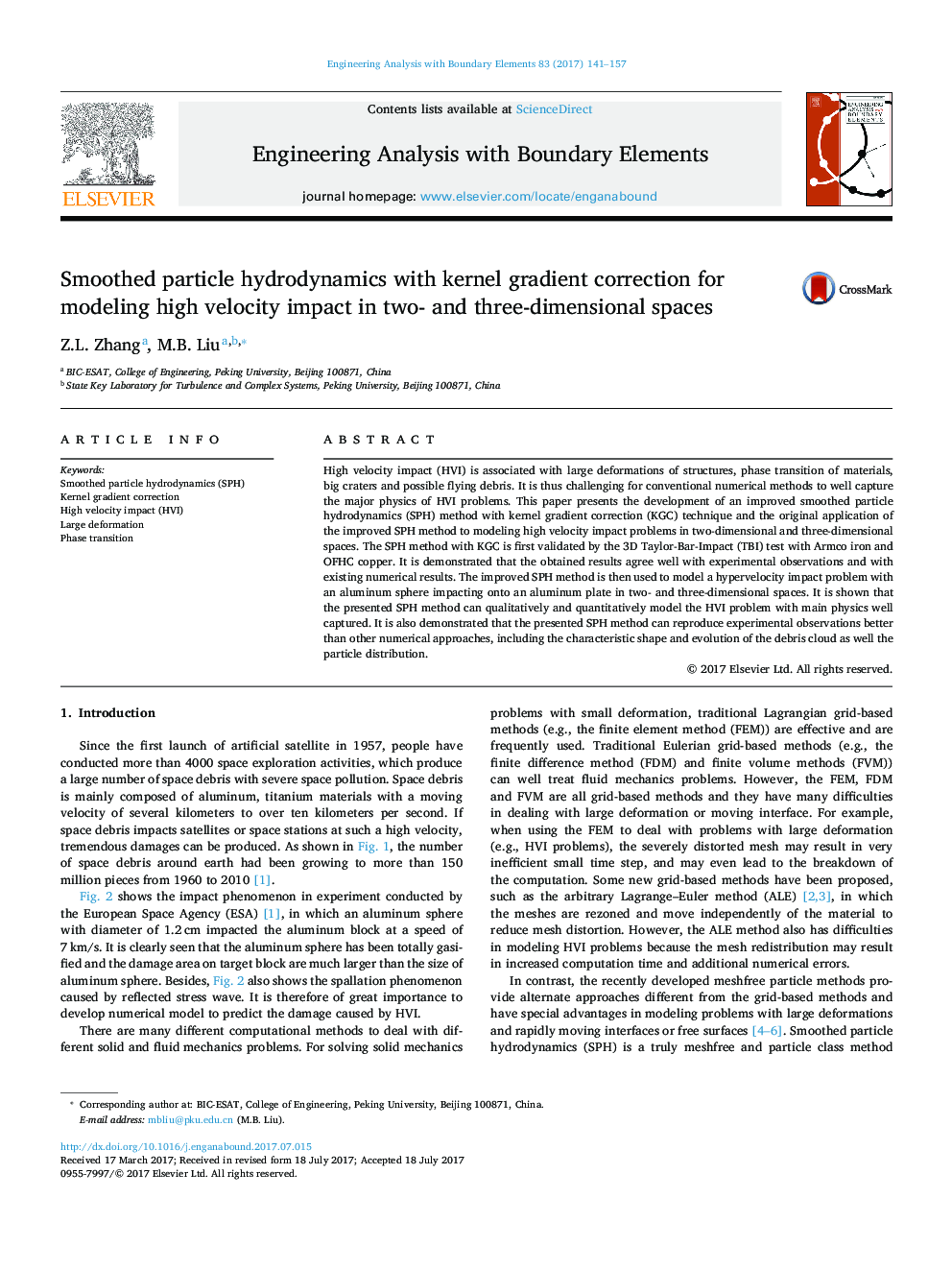| Article ID | Journal | Published Year | Pages | File Type |
|---|---|---|---|---|
| 4965975 | Engineering Analysis with Boundary Elements | 2017 | 17 Pages |
Abstract
High velocity impact (HVI) is associated with large deformations of structures, phase transition of materials, big craters and possible flying debris. It is thus challenging for conventional numerical methods to well capture the major physics of HVI problems. This paper presents the development of an improved smoothed particle hydrodynamics (SPH) method with kernel gradient correction (KGC) technique and the original application of the improved SPH method to modeling high velocity impact problems in two-dimensional and three-dimensional spaces. The SPH method with KGC is first validated by the 3D Taylor-Bar-Impact (TBI) test with Armco iron and OFHC copper. It is demonstrated that the obtained results agree well with experimental observations and with existing numerical results. The improved SPH method is then used to model a hypervelocity impact problem with an aluminum sphere impacting onto an aluminum plate in two- and three-dimensional spaces. It is shown that the presented SPH method can qualitatively and quantitatively model the HVI problem with main physics well captured. It is also demonstrated that the presented SPH method can reproduce experimental observations better than other numerical approaches, including the characteristic shape and evolution of the debris cloud as well the particle distribution.
Related Topics
Physical Sciences and Engineering
Computer Science
Computer Science Applications
Authors
Zhang Z.L., Liu M.B.,
